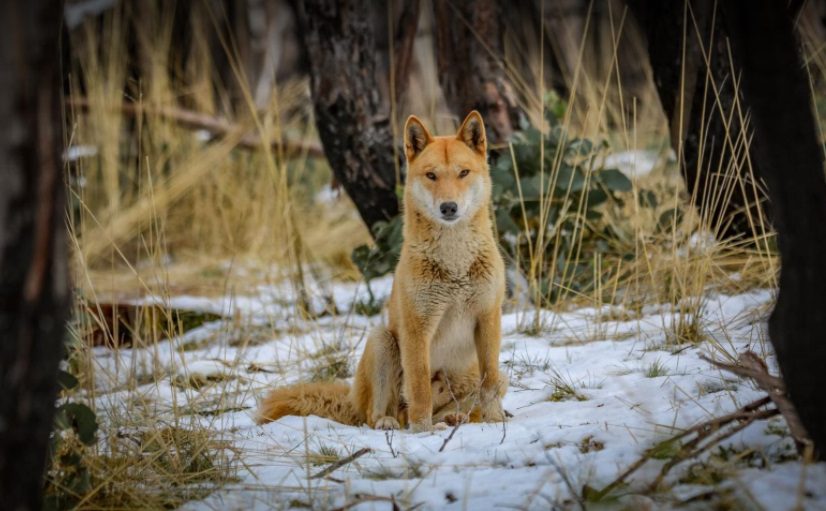I'm fascinated by dingoes IRL, and as such I've always been extremely happy that Frontier decided to add them to the game! However, there's a few small issues I currently have relating to its biomes and Zoopedia entry that I've brought up many times before, and given it's been two and a half years since the Australia Pack now and they still haven't been fixed, I thought I'd give dingoes their own thread to bring them into the spotlight again. While giving the dingoes chorus behaviour and more colour variations would be fantastic, this thread is more about two small easy fixes that shouldn't take much time to implement.
First and foremost is the issue of the dingo's restricted biome tags. Currently the dingo in-game is considered to be found only in grasslands and deserts, but this vastly underestimates how adaptable they are - they are among Australia's most widespread mammals and their natural distribution ranges across the entirety of the Australian mainland, from the high alpine regions to the tropical rainforests. And, despite widespread misconception, there are still pure dingoes in the south-eastern temperate regions, not that purity means much for canids anyway.


Giving the dingoes the temperate and tropical biome tags would both be more accurate and help change the public's perception of dingoes just being yellow dogs of the desert. It'd also encourage players to build more varied dingo habitats!
Speaking of yellow dogs, the Zoopedia Fun Facts brings up this little tidbit:
This is actually false, and has been known as such for quite some time now - the very first European painting of a dingo, done prior to the introduction of domestic dogs to Australia, depicts a black-and-tan individual, and many other colours like brindle, patchy and sable have been found to be present in pure dingoes since. Unfortunately, including this outdated idea in the Zoopedia perpetuates the idea that all dingoes that aren't the classic ginger colour are hybrids or feral dogs, a misconception that leads to many perfectly pure dingoes being killed.
While I can live without the great variety of dingo colour morphs being represented in game (although it is a shame), I would greatly appreciate it if this incorrect fact was removed and replaced with something else - you could even change it to something like "Despite common misconception, pure dingoes can be found in many different colours besides the classic ginger".
Thanks for reading all this, and I hope you take these changes into consideration!
First and foremost is the issue of the dingo's restricted biome tags. Currently the dingo in-game is considered to be found only in grasslands and deserts, but this vastly underestimates how adaptable they are - they are among Australia's most widespread mammals and their natural distribution ranges across the entirety of the Australian mainland, from the high alpine regions to the tropical rainforests. And, despite widespread misconception, there are still pure dingoes in the south-eastern temperate regions, not that purity means much for canids anyway.


Giving the dingoes the temperate and tropical biome tags would both be more accurate and help change the public's perception of dingoes just being yellow dogs of the desert. It'd also encourage players to build more varied dingo habitats!
Speaking of yellow dogs, the Zoopedia Fun Facts brings up this little tidbit:
Interbreeding with domestic dogs has resulted in unusual colours of dingoes, such as black or white individuals
This is actually false, and has been known as such for quite some time now - the very first European painting of a dingo, done prior to the introduction of domestic dogs to Australia, depicts a black-and-tan individual, and many other colours like brindle, patchy and sable have been found to be present in pure dingoes since. Unfortunately, including this outdated idea in the Zoopedia perpetuates the idea that all dingoes that aren't the classic ginger colour are hybrids or feral dogs, a misconception that leads to many perfectly pure dingoes being killed.
While I can live without the great variety of dingo colour morphs being represented in game (although it is a shame), I would greatly appreciate it if this incorrect fact was removed and replaced with something else - you could even change it to something like "Despite common misconception, pure dingoes can be found in many different colours besides the classic ginger".
Thanks for reading all this, and I hope you take these changes into consideration!
Last edited:
